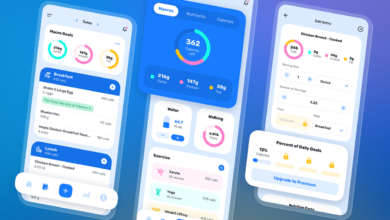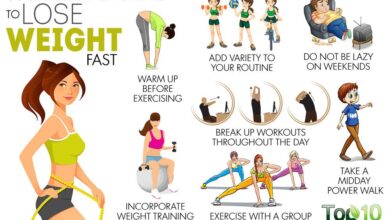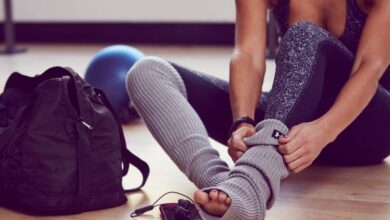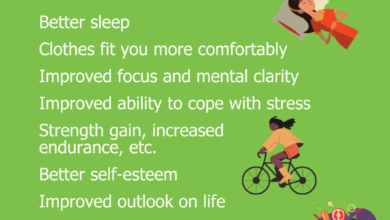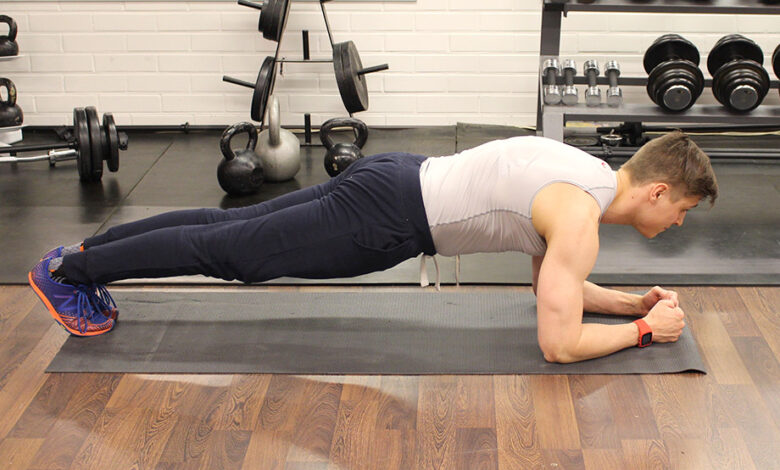
How to Do the Perfect Plank: Your Guide to Core Strength
How to do the perfect plank is a question that pops up in the minds of many fitness enthusiasts. This deceptively simple exercise is a powerhouse for core strength, stability, and overall fitness. Whether you’re a beginner or a seasoned athlete, mastering the plank can unlock a world of benefits.
From understanding the proper form to incorporating advanced variations, we’ll delve into the nuances of this effective exercise. We’ll also explore how to build strength and endurance, along with modifications for different fitness levels and injury considerations.
Understanding the Plank
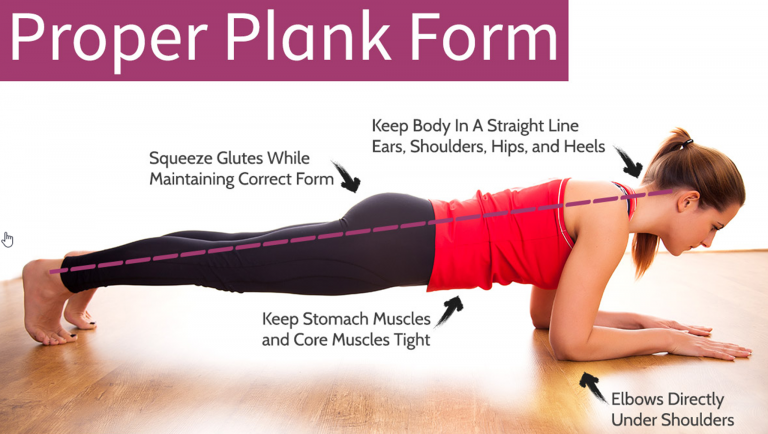
The plank is a deceptively simple exercise that delivers a multitude of benefits, targeting numerous muscle groups and improving core strength, stability, and overall fitness. This exercise is a staple in many fitness routines, from yoga to CrossFit, and can be modified to suit various fitness levels.
Benefits of the Plank
The plank is a highly effective exercise that strengthens multiple muscle groups simultaneously. Here are some of its key benefits:
- Core Strength:The plank primarily targets the core muscles, including the rectus abdominis, obliques, and transverse abdominis, which are crucial for stability, balance, and injury prevention.
- Improved Posture:By strengthening the core, the plank helps improve posture by promoting proper alignment of the spine.
- Reduced Back Pain:A strong core can help alleviate and prevent back pain by supporting the spine and reducing strain on the lower back muscles.
- Increased Metabolism:The plank, like other isometric exercises, can help increase metabolism, leading to potential calorie burn and weight management.
- Enhanced Flexibility:The plank stretches and strengthens the muscles surrounding the hips, shoulders, and back, contributing to improved flexibility.
Proper Plank Form
Maintaining proper form is essential for maximizing the benefits and preventing injuries while performing the plank. Here’s a step-by-step guide:
- Start Position:Begin in a push-up position, with your forearms on the floor, elbows aligned beneath your shoulders, and your body in a straight line from head to heels.
- Engage Core:Tighten your abdominal muscles and glutes, creating a strong core engagement.
- Neck Alignment:Keep your neck in a neutral position, looking straight down at the floor. Avoid tilting your head up or down.
- Body Alignment:Ensure your body forms a straight line from your head to your heels. Avoid sagging in the hips or arching your back.
- Breath:Breathe normally throughout the exercise, avoiding holding your breath.
Types of Planks and Variations
The basic plank can be modified to challenge different muscle groups and enhance the exercise. Here are some popular plank variations:
- High Plank:This variation is performed with your hands instead of forearms, engaging the triceps and shoulders more.
- Forearm Plank:This is the standard plank position, focusing primarily on core strength.
- Side Plank:This variation targets the obliques and strengthens the core from a lateral perspective.
- Plank with Leg Raises:This variation increases the challenge by engaging the core further with leg raises.
- Plank with Arm Raises:This variation adds an upper body challenge by lifting one arm at a time while maintaining a stable plank.
- Plank with Knee-to-Elbow:This variation engages the core and obliques by bringing one knee towards the opposite elbow.
Getting Started: How To Do The Perfect Plank
Now that you understand the fundamentals of the plank, let’s dive into the practical steps of performing it correctly. Mastering the plank requires practice and attention to detail, but with the right guidance, you can achieve a strong and stable plank position.
Performing a Plank
Before starting, ensure you have a comfortable, flat surface like a yoga mat or a carpeted floor.
- Start in a push-up position: Position your hands shoulder-width apart, directly below your shoulders, with your fingers pointing forward. Your body should form a straight line from your head to your heels.
- Lower your forearms to the floor: Bend your elbows and lower your forearms to the floor, keeping them parallel to each other and shoulder-width apart. Ensure your elbows are directly below your shoulders.
- Engage your core: Tighten your abdominal muscles and glutes. This will help stabilize your body and prevent your hips from sagging.
- Maintain a neutral spine: Keep your back straight and avoid arching or rounding your spine.
- Hold the position: Once you’ve found the correct form, hold the plank for as long as you can maintain proper form.
Tips for Beginners
- Start with short holds: If you’re new to planks, start with holding for 10-15 seconds and gradually increase the duration as you get stronger.
- Modify the plank: If you find the full plank too challenging, you can modify it by placing your knees on the floor. This reduces the strain on your core muscles.
- Focus on form over time: It’s more important to maintain proper form than to hold the plank for an extended period. Prioritize quality over quantity.
- Engage your entire body: Remember to engage not only your core but also your glutes, quads, and shoulders. This will help distribute the weight evenly and prevent strain on specific areas.
Common Mistakes to Avoid
- Sagging hips: A common mistake is letting your hips sag towards the floor. This puts unnecessary stress on your lower back. To avoid this, keep your core engaged and your body in a straight line.
- Rounding your back: Another mistake is rounding your back. This can also lead to lower back pain. Keep your back straight and engage your core muscles.
- Looking up: Looking up can strain your neck and throw off your alignment. Keep your gaze straight ahead, focusing on a point on the floor a few feet in front of you.
- Holding your breath: It’s important to breathe deeply and evenly throughout the plank. Holding your breath can restrict your movement and make it difficult to maintain proper form.
Building Strength and Endurance
The ability to hold a plank for an extended period is a testament to your core strength and endurance. Building these qualities is not just about holding the pose longer; it’s about creating a strong foundation for a healthier, more functional body.
Gradual Plank Time Increase
A structured workout plan is key to achieving your plank goals. Here’s a sample plan you can adapt to your fitness level:
- Week 1:Start with 10-second planks, holding for 3 sets with 30-second rest between sets.
- Week 2:Increase to 15-second planks, holding for 3 sets with 30-second rest between sets.
- Week 3:Increase to 20-second planks, holding for 3 sets with 30-second rest between sets.
- Week 4:Increase to 30-second planks, holding for 3 sets with 30-second rest between sets.
As you progress, you can gradually increase the duration of your planks and the number of sets. It’s important to listen to your body and adjust the plan as needed.
Holding a plank is all about engaging your core, but sometimes stress can make you crave that sugary comfort food instead. If you find yourself reaching for snacks when you’re feeling overwhelmed, try checking out these 7 ways to stop stress eating – it might help you focus on building that core strength instead.
Once you’ve got the stress under control, remember to keep your back straight, tighten your glutes, and hold that perfect plank for as long as you can!
Building Core Strength for Longer Planks
Core strength is the foundation of a strong plank. Strengthening your core muscles can help you hold the plank for longer durations. Here are some exercises that can help:
- Crunches:This classic exercise targets your upper abs.
- Leg Raises:Leg raises work your lower abs and hip flexors.
- Russian Twists:This exercise engages your obliques, which are the muscles along the sides of your abdomen.
- Plank Variations:There are several variations of the plank that can challenge your core muscles in different ways. These include the side plank, forearm plank, and high plank.
Consistency and Progression
Consistency is key to building strength and endurance. Aim to do your plank workout at least 3 times per week. As you get stronger, you can gradually increase the duration of your planks and the number of sets. The key is to listen to your body and progress at a pace that feels comfortable.
Advanced Plank Techniques
Once you’ve mastered the basic plank, you’re ready to level up your core strength and stability with advanced variations. These variations target different muscle groups, challenge your balance, and increase the difficulty, pushing you to new fitness heights.
Side Plank
The side plank engages your obliques, the muscles responsible for twisting and bending your torso. It also strengthens your core and improves your posture.To perform a side plank:
- Start in a push-up position, then rotate your body to one side, resting on your forearm.
- Stack your feet on top of each other and keep your body in a straight line from head to toe.
- Engage your core and hold the position for 30 seconds to a minute, then switch sides.
Forearm Plank, How to do the perfect plank
The forearm plank is a more challenging variation of the traditional plank, requiring more core engagement and stability. It strengthens your forearms, shoulders, and chest, in addition to your core.To perform a forearm plank:
- Start in a push-up position, then lower your forearms to the ground, keeping your elbows directly under your shoulders.
- Engage your core and hold the position for 30 seconds to a minute.
Elevated Plank
The elevated plank increases the difficulty by raising your hands or feet, requiring more effort to maintain stability. This variation targets your core, shoulders, and glutes.To perform an elevated plank:
- Place your hands on an elevated surface, such as a bench or box, keeping your body in a straight line from head to toe.
- Engage your core and hold the position for 30 seconds to a minute.
Plank Modifications
The plank is a fantastic exercise, but it’s not always accessible to everyone. Injuries, limitations, and varying fitness levels can make the standard plank challenging or even impossible. Fortunately, there are many modifications that can make the plank more achievable and comfortable.
Mastering the perfect plank isn’t just about holding your body rigid – it’s about engaging your core muscles and maintaining proper form. This requires a level of strength and endurance that some might consider supplementing for, but as experts debate should you supplement experts debate should you supplement , it’s important to remember that building a strong foundation through consistent training is key.
So, focus on engaging your core, keeping your body in a straight line from head to heels, and hold that plank for as long as you can!
Modifications for Injuries and Limitations
These modifications can help you perform the plank safely and effectively, even if you have an injury or limitation.
Holding a plank is all about core strength and proper form. Engage your entire body, from your shoulders to your toes, and keep your back straight. If you’re looking for ways to boost your fitness, check out this awesome 10 healthy swaps save 300 calories infographic , which can help you make smarter choices in your diet.
Once you’ve got those healthy habits in place, you’ll be ready to conquer that plank with even more energy!
- Knee Plank:This modification reduces the strain on your wrists and lower back by supporting your weight on your knees instead of your toes. To perform a knee plank, start in a push-up position, then lower your forearms to the ground.
Bring your knees to the floor, keeping your body in a straight line from your head to your knees.
- Forearm Plank on Elevated Surface:If wrist pain is a concern, elevating your forearms on a low platform, such as a yoga block or a stack of books, can alleviate pressure on your wrists. This modification can also be helpful for people with limited wrist mobility.
- Wall Plank:This modification reduces the strain on your core by using the wall for support. Stand facing the wall, about an arm’s length away, and place your hands shoulder-width apart on the wall. Step back until your body forms a straight line from your head to your heels.
Modifications for Different Fitness Levels
The plank can be modified to suit different fitness levels, making it a versatile exercise for everyone.
| Fitness Level | Modification | Description |
|---|---|---|
| Beginner | Modified Plank | Start on your knees, keeping your body in a straight line from your head to your knees. Hold for as long as you can comfortably, gradually increasing the hold time. |
| Intermediate | Full Plank with Forearm Support | Perform a standard plank, holding your body in a straight line from your head to your heels, for 30 seconds or more. |
| Advanced | Plank with Leg Raises | Perform a standard plank and lift one leg off the ground, holding it for a few seconds before switching legs. |
Alternative Exercises
If you find the plank challenging, there are many other exercises that can strengthen your core.
- Bird Dog:This exercise works your core, back, and glutes. Start on your hands and knees, keeping your back flat. Extend one arm and the opposite leg out, keeping your core engaged. Hold for a few seconds before switching sides.
- Superman:This exercise strengthens your lower back and glutes. Lie face down on the floor with your arms extended in front of you and your legs extended behind you. Lift your arms and legs off the ground, keeping your core engaged.
Hold for a few seconds before lowering back down.
- Crunches:This exercise targets your abdominal muscles. Lie on your back with your knees bent and your feet flat on the floor. Place your hands behind your head and lift your upper body off the ground, contracting your abdominal muscles.
Lower back down slowly.
Plank Benefits and Results
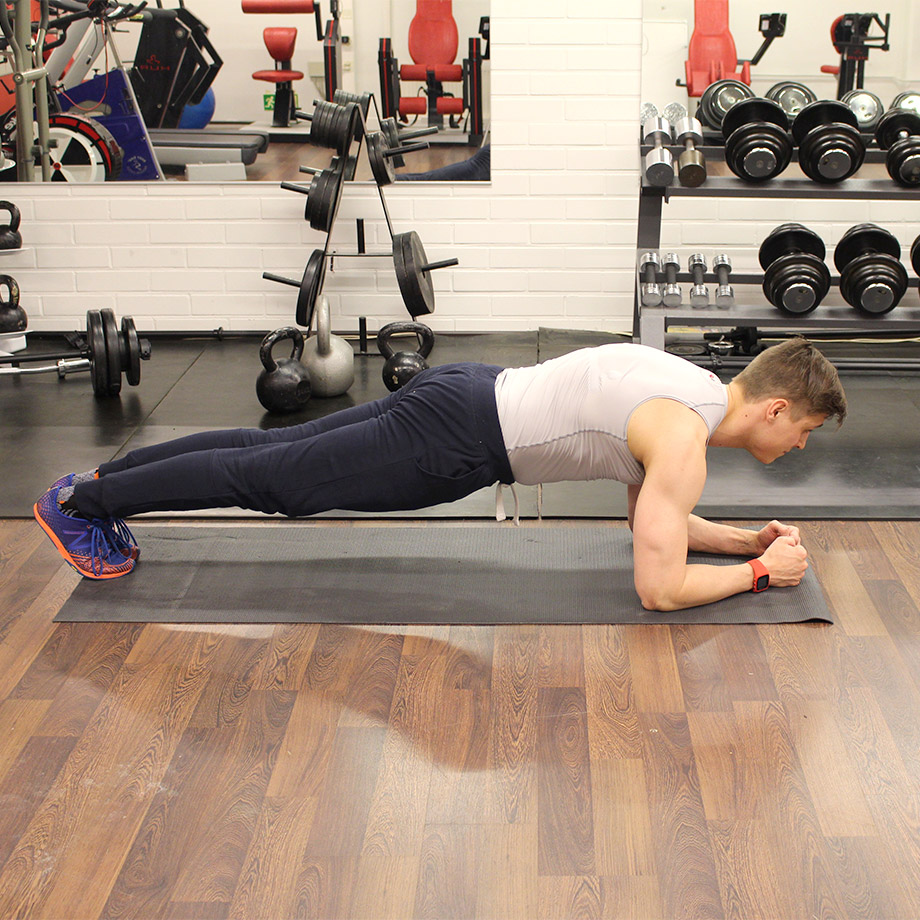
The plank exercise is a deceptively simple yet remarkably effective exercise that offers a plethora of benefits for your body. It targets your core muscles, which are essential for stability, posture, and everyday activities. Consistent plank practice can lead to a stronger core, improved posture, enhanced athletic performance, and a more sculpted physique.
Benefits of Plank Exercise
Regular plank exercises can significantly improve your overall well-being. Here are some of the key benefits:
Strengthening Your Core
The plank exercise primarily targets your core muscles, including your rectus abdominis, obliques, transverse abdominis, and erector spinae. These muscles work together to stabilize your spine, maintain proper posture, and support your body’s movements. By strengthening your core, you can improve your balance, coordination, and overall functional fitness.
Improving Posture
A strong core is crucial for maintaining good posture. The plank exercise helps strengthen the muscles that support your spine, which can prevent slouching and improve your overall alignment. Proper posture can reduce back pain, improve breathing, and boost your confidence.
Enhancing Stability
The plank exercise is an excellent way to improve your stability. By engaging your core muscles, you create a strong foundation for your body, which helps you maintain balance and control during various activities. This can be especially beneficial for athletes who need to maintain their balance during fast-paced movements.
Boosting Athletic Performance
A strong core is essential for athletes in various sports. The plank exercise can help athletes improve their power, speed, and agility. It also helps prevent injuries by strengthening the muscles that support the spine and joints.
Sculpting Your Physique
The plank exercise can help sculpt your abdominal muscles and create a more defined physique. By engaging your core muscles, you can burn calories and improve your muscle definition.
Examples of Plank Benefits in Everyday Activities
The benefits of plank exercise extend beyond the gym and into your daily life. A strong core can make everyday activities easier and more enjoyable. For example:
- Carrying heavy groceries:A strong core helps you maintain good posture and balance while carrying heavy items, reducing strain on your back and shoulders.
- Playing with children:The plank exercise helps you engage your core muscles, allowing you to bend, twist, and move with ease while playing with your children.
- Gardening:A strong core provides stability and support while bending and lifting, making gardening tasks less strenuous.
Potential for Achieving a Sculpted Physique
The plank exercise can be an effective tool for achieving a sculpted physique. It targets your core muscles, which are essential for a toned and defined midsection. However, it’s important to remember that achieving a sculpted physique requires a comprehensive approach that includes a balanced diet, regular exercise, and consistent effort.
The plank exercise is a valuable tool for improving your core strength, posture, stability, and athletic performance. It can also contribute to a sculpted physique when combined with a healthy lifestyle.
Epilogue
The perfect plank is a testament to dedication and consistency. It’s not just about holding a position but about engaging your entire core and reaping the rewards of improved posture, enhanced athletic performance, and a sculpted physique. So, embrace the challenge, master the plank, and unlock the power of your core.

